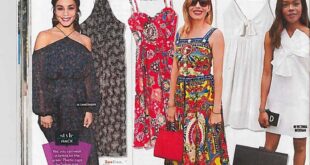Different work environments require different dress codes, and understanding these codes is essential to making a positive impression and feeling comfortable at work. Explore the various types of work dress codes, from business casual wear to formal attire, and learn valuable insights into what each entails.
Business casual
Business casual attire is one of the most common dress codes in workplaces across various industries. It strikes a balance between a professional look and a relaxed feel. Employees adhering to this dress code can wear slacks, khakis, dress pants, and collared t-shirts or blouses.
Ties and jackets are usually optional for business casual clothing but can be added for a more polished appearance. For women, skirts and dresses are acceptable, and comfortable dress shoes are preferred.
Casual attire
Casual attire varies depending on the workplace. Some offices have a more relaxed casual dress code, where employees can wear jeans and cotton or polyester t-shirts with casual shoes. However, it’s essential to remember that even in casual settings, it’s crucial to maintain a neat appearance
Smart casual
Smart casual attire is informal clothing worn above business casual in formality. It allows for a more fashionable and individualized approach to dressing while maintaining a professional edge.
This dress code often includes tailored blazers, stylish lace-up shoes, and a neat button-down shirt.
Business formal
When it comes to business formal attire, think of the classic suit and tie for men and a skirt suit or dress for women. This business professional attire is typically reserved for high-stakes meetings, conferences, and events.
Employees are expected to dress impeccably, with minimal jewelry and minimalistic accessories.
Gender-neutral professional dress
There has been a shift towards a more gender-neutral professional dress code. This change means that individuals are encouraged to wear attire that aligns with their gender identity, regardless of traditional gender norms.
Companies increasingly recognize the importance of inclusivity in their dress codes and appropriate business attire.
Dressing for leadership positions
Individuals in leadership positions dress slightly differently than their subordinates. They often set the tone for the office dress code.
It’s common to see leaders wearing formal or casual business attire to convey authority and professionalism.
Dress codes in various industries
Different industries may have a specific dress code. For example, the fashion industry may encourage more creative and trendy attire, while the financial sector may lean towards traditional business formal wear and smart casual attire.
Understanding the industry-specific dress code is essential for making a positive impression.
The role of accessories
Accessories can make a significant difference in your overall look. Busy accessories that wear casual clothing may suit more creative workplaces, while minimal jewelry is often preferred in formal settings.
It’s essential to choose accessories that complement your professional dress code.
The importance of comfort
While dressing professionally is essential to being a business professional, comfort should not be overlooked. It’s crucial to wear attire that allows you to perform your job comfortably.
Ill-fitting or uncomfortable clothing can be distracting and affect your productivity.
Last words
Understanding the diverse work dress code types is crucial for successfully navigating the professional world. By aligning your attire with your company’s culture and industry norms, you can make a positive impression and feel confident in any professional setting.
 HammBurg Be informed with latest news, reviews, entertainment, lifestyle tips, and much more.
HammBurg Be informed with latest news, reviews, entertainment, lifestyle tips, and much more.




